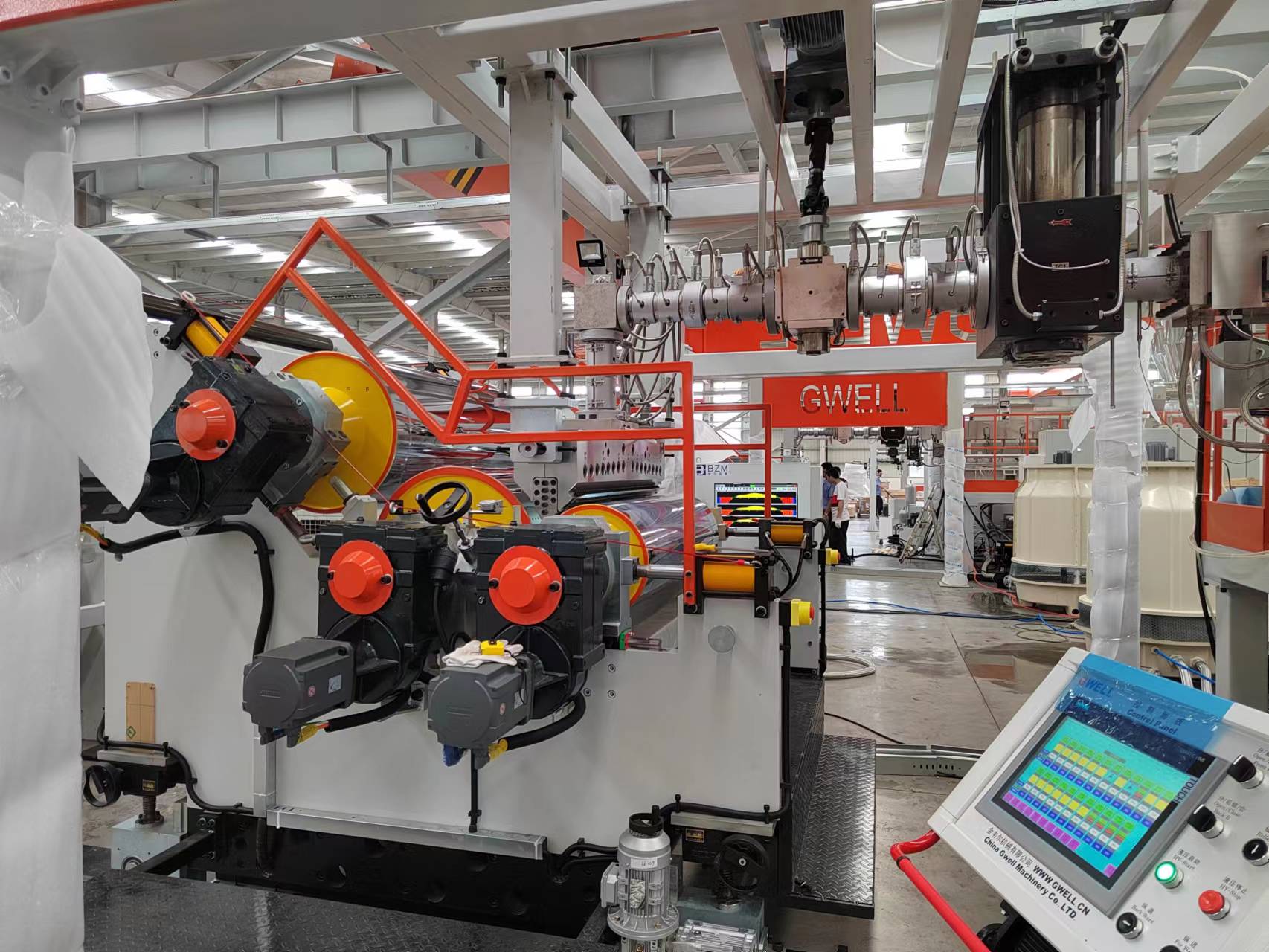1、 Composition of production line
The lithium battery separator production line mainly consists of multiple parts such as ingredient extrusion system, casting sheet forming system, extraction drying system, bidirectional synchronous stretching system, transverse stretching system, free heat setting system, online winding system, coating system, and slitting machine system. These systems work together to complete the entire production process from raw materials to finished membranes.
2、 Production process
The production process of lithium battery separators mainly includes multiple links such as raw material formulation and rapid adjustment, microporous preparation technology, and independent design of complete equipment. Among them, microporous preparation technology is the core of membrane preparation. According to the different mechanisms of microporous formation, it can be divided into two processes: dry and wet.
Dry process: Dry process is a commonly used method in membrane preparation, which involves mixing polymer with additives, followed by multiple steps such as melt extrusion, crystal structure formation, heat treatment, and microporous stretching to finally produce microporous membranes. This process mainly includes two methods: single pull and double pull, suitable for producing single-layer PP film, single-layer PE film, double-layer film, and multi-layer film. The dry process is simple, low-cost, and environmentally friendly, but the performance of the finished product is relatively weak, making it more suitable for low-power, low capacity mid to low end batteries.
Wet process: The wet process mainly uses thermally induced phase separation (TIPS), which involves mixing crystalline polymers with thermoplastic polymers and adding high boiling point small molecule chemicals as diluents. Forming a homogeneous solution at high temperature, followed by cooling to induce solid-liquid or liquid-liquid phase separation. After extracting and removing small molecule chemicals, a porous membrane structure is formed. Wet process technology is relatively complex, expensive, and requires strict equipment, but the produced membranes have significant advantages in performance, such as thinner thickness, stronger tensile strength, higher porosity, and more uniform pore size and transverse shrinkage. The wet process is mainly used in the manufacturing of ternary lithium batteries.
3、 Characteristics of production line
Highly automated: The lithium battery separator production line adopts highly automated equipment and technology to ensure the stability and efficiency of the production process.
High precision: The production line has high requirements for equipment precision. Any slight deviation in process parameters and reaction conditions can affect the consistency of the finished product, resulting in a failure to reach the level of mass production in terms of qualification rate.
High technical barriers: The separator is a key inner component in lithium batteries with high technical barriers, and its performance determines the interface structure and internal resistance of the battery, directly affecting the capacity, cycling, and safety performance of the battery.
4、 Market Trends and Development
With the rapid development of industries such as 3C equipment and new energy vehicles, the demand for lithium-ion batteries continues to expand, driving the rapid growth of lithium battery separator shipments. This provides broad development opportunities for manufacturers of diaphragm production lines and diaphragm specific equipment. Meanwhile, with the continuous maturity of domestic technology, the localization of lithium battery separator equipment is also expected to usher in an opportunity.









